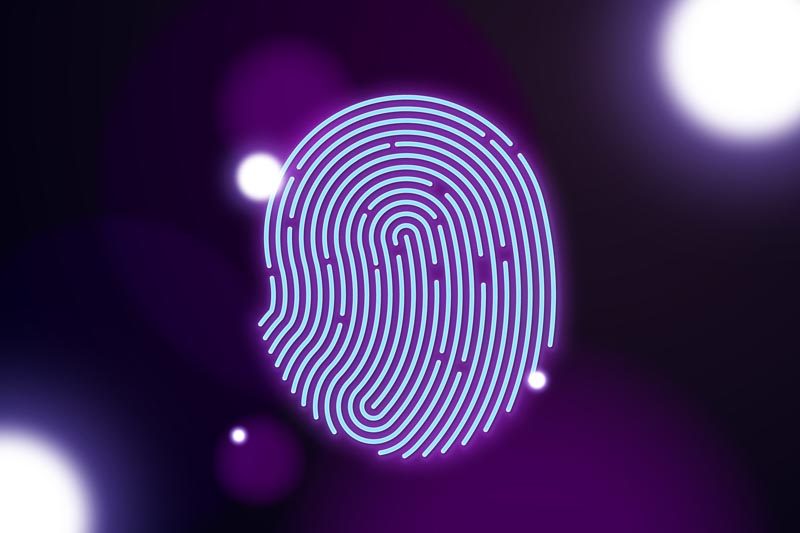Is it because of the software?
Our mobile device will eventually have a far greater number of apps than it had initially. The permissions given to any of these applications may affect how well the fingerprint sensor works. There are a lot of apps that ask for permission to use our fingerprints to log in. Some apps may conflict with the method the system wants and cause errors. Because of this, we will try different things to see if the problem is with the software.
Start up the phone
Because of the smartphone’s cache, some of the device’s processes can sometimes become completely “frozen,” which stops some other functions from working right. Because of this, even though it seems very simple, you should try restarting the phone before moving on to the next solution.
The benefit of this activity is that it just takes a few seconds and may be carried out in various ways. Even so, the fastest way to turn off the phone is to press the power button and click on the option to turn it off. Lastly, we need to give it 20 or 30 seconds to rest before turning it back on.
Use Safe Mode
With Android’s safe mode, many users have been able to fix these problems with the fingerprint sensor. And that’s it. With this method, we can find out if an app might be stopping it from working. If this is the problem, this mode will turn it off so we can use the reader again.
Once we’re sure, we’ll have to delete the most recently installed apps and ensure it doesn’t happen again. Therefore, we must push the power button until the Android breakdown menu shows on mobile devices to reach this mode. And do these things:
- We keep pressing the button that says “Restart.”
- It will prompt us to restart the device in Safe Mode.
- The activity is finally verified.
Check for an update to the system.
Updates for mobile devices are crucial for both fixing potential security flaws and improving various features of all terminals, such as the outcomes of fingerprint-based terminal blocking. So, it’s time to see if a new version of the operating system is on the way. This short and easy procedure must be followed to do this:
- First, we need to open the app for Mobile Settings.
- Next, we’ll go down until we see the System option (in some cases, we will find ourselves directly with the System Updates option ).
- From this menu, select the Updates tab.
- Last, we check to see if we have one left.
Restart the phone
The phone’s fingerprint sensor might not work because of a bad update to the terminal’s software or even malware that got on the phone. In these situations, the last thing you can do is let the device be formatted. But before you do it, you should make a backup copy of all the information on the device.
It fails to operate or performs improperly.
This biometric part, which is in almost all terminals, can go wrong in many ways. Even though, overall, the problems we’ll face are the ones we’ll look at below. However, they are not the only ones since it cannot be ruled out for the time being that there is a software issue or that the mobile device’s fingerprint sensor has been compromised.
Dirt was the first problem.
Dirt and dust tend to go hand in hand with time, and our phones are the perfect place for them to build up unless we’re one of those users who clean their phones now and then. It’s important to remember that dirt is more likely to damage a fingerprint sensor on the side or back of an Android device than the one built into the screen.
Over time, this dust and dirt buildup makes the reader less accurate, so it can’t read our biometric information correctly. It may mean that it failed to read or that it can’t read anything at all. Another sign is if the reading isn’t consistent or if it doesn’t always read the print. The same thing will happen if we have the dirty finger we registered since it would be harder for it to read the print.
Scrapes and Scuffs
Again, these are logical problems that come with time. In this case, they happen no matter where the fingerprint sensor is. When you rub the fingerprint sensor, you make tiny scratches or sometimes bigger scratches that make the sensor less sensitive. This problem shows up more in the sensors in the back.
But it can also happen on the screens, causing damage to the part of the screen where the sensor reads. So, we can’t say for sure that this problem won’t happen. Well, it’s normal for this problem to appear in a smartphone reader after some time, and it’s used daily.
Falls and bumps
We use the same idea to think about how the phone may have been hit or dropped. A phone doesn’t have to have been bumped and dropped for a long time, but if we’ve had it for a long time, it’s more likely that we’ve dropped it more than once. But we already told you that this won’t be a problem if it hasn’t been hit in any way and still doesn’t work.
The fingerprint sensor on a smartphone can be hurt by any blow, no matter where it is. Sometimes there is damage on the inside that affects how the biometric sensor connects. In this case, we’ll likely need help from a tech person. Well, since the problem is with the hardware, it will be hard for us to replace it without the help of an expert.
The screen saver went wrong.
Since the fingerprint reader is located underneath the panel, a low-quality protector may impede the fingerprint reader’s correct operation on the device’s panel. Because of this, it could be the protector itself if it doesn’t work well for you or if you can’t even get it to respond.
We must thus remove it and check whether the sensor functions normally once again to determine if this is the primary offender. If it gives you a good answer, you already know that the protector we had in the terminal wasn’t completely compatible with the fingerprint reader on your phone. And that is, if the protection we bought is too thick, it could interfere with how well it works.



